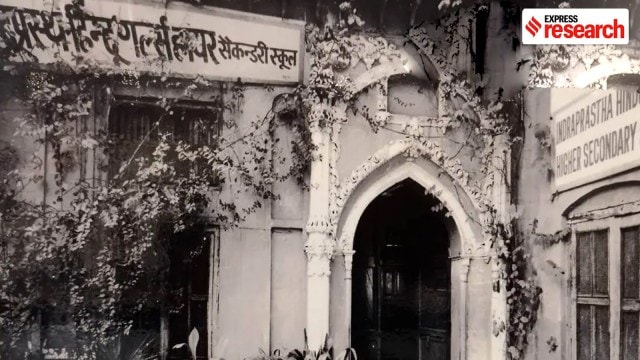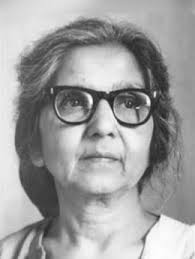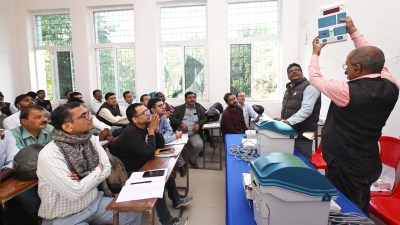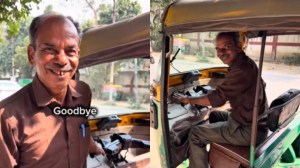On August 8, 1942, Mahatma Gandhi delivered his iconic ‘Do or Die’ speech in Bombay, marking the beginning of the Quit India Movement, one of India’s most significant mass protests. By the following day, Gandhi and other senior leaders were arrested, yet the movement only gained momentum, evolving into the ‘August Revolution’ — the most substantial rebellion since the 1857 Sepoy Mutiny. This movement particularly galvanised the youth, with many students abandoning their studies to join the struggle. Notably, Delhi University became a hub of nationalist fervour, with female students at the forefront, organising street demonstrations and rallies in the national capital.
Other organisations, such as the All India Women’s Conference and the Delhi Mahila Sangh, also emerged, leading to women participation in the freedom struggle.
Student rebellions
The arrest of Congress leaders sparked the first major student strike. Students from St. Stephen’s College and Hindu College organised a march — which reportedly included Professor Rao and other faculty members of the University — from the campus to Chandni Chowk. It passed through Alipur Road and IP College, where authorities had locked the gates to keep female students out. Undeterred, the girls scaled the walls to join the procession.
Archival evidence suggests that IP College students were deeply engaged in nationalist movements. They attended leaders’ speeches, skipped classes to join picket lines, and gathered on college lawns to discuss and support the Quit India Movement. There was also an active campaign promoting Khadi within the university. As historian Meena Bhargava says, “You must view this in the context of national spirit, shared patriotism, and the strong sense of unity with their leaders.”
A 1974 edition of the IP College magazine, Golden Oriole, includes an account by Sucharita Sengupta, who attended college from 1942 to 1946. She wrote:
“Looking back I think that the years spent in college were really hectic. We were politically involved in the ‘42 revolution,’ uttering slogans, having long meetings, and singing innumerable patriotic songs. Our minds were enthused with the words of our leaders, and we never missed an opportunity to defy the rules and regulations set by the British Government. The authorities of the college, fully sympathising with us, could hardly take any active part in the revolution for fear of repercussions. The I.N.A. trials again flared up our enthusiasm. The song ‘Kadam Kadam Badhaye Ja’ was on everybody’s lips. We waited breathlessly for every bit of news. When the heroes were freed, what jubilation we had!”
Story continues below this ad
India hosted the 10th National Games in Patiala in 1942, which included a netball competition with students from IP College. Despite being declared runners-up, the women opted not to attend the award ceremony. Instead, upon learning about the Quit India Movement and the arrest of Gandhi and other leaders, they seized the opportunity to shout anti-British slogans.
 Aruna Asaf Ali
Aruna Asaf Ali“Lady Linlithgow, the Vicerine, was notably present at the event. She had been pivotal in the acquisition of a new building, Alipore House, for the College in 1939. The College continues to be situated in the same building. Despite the potential consequences, such as the risk of losing grants and warnings from their principal, the students remained undeterred. The students were so inspired by the Freedom Movement that the presence or authority of the Vicerine did not dissuade them,” says Bhargava.
Many young women were also inspired by leaders such as Aruna Asaf Ali. Aruna published magazines and bulletins, including Inquilab, which she co-edited with Ram Manohar Lohia. Delhi University students supported her efforts by helping paste anti-British posters throughout the capital. “Aruna Asaf Ali’s protests played a crucial role in mobilising students in Delhi,” says Professor Farooqui.
Government backlash
Maurice Linford Gwyer served as the vice-chancellor of Delhi University from 1938 to 1950. While he oversaw significant restructuring of the university, his association with British rule made these reforms unacceptable to students, who called for his removal. In response, the government took harsh measures, including confiscating degrees and resorting to tear gas and lathi charge during protests. Students from Ramjas College were held responsible for arson and sabotage.
Story continues below this ad
More from Express Research: Quit India movement anniversary: Of women who fought in the freedom struggle
Letters from the Education Department to the governing bodies of Hindu, Ramjas, and IP College warned that failure to control student protests could lead to the loss of grants from the Central Revenue Department. “While this threat may have concerned the governing bodies and principals, it did not deter the students. Despite facing rustication and persistent threats, the students continued their protests,” Bhargava says.
In the book Women, Education and Politics: The Women’s Movement and Delhi’s Indraprastha College (2005), Meena Bhargava examines the Quit India Movement. She says Delhi University students were imprisoned alongside common criminals as part of the government’s crackdown. This included 16 students from Hindu College, five from Indraprastha, two from Ramjas, and one from Commercial College (now SRCC). Despite this harsh treatment, they continued their activism, including hoisting the tricolour and holding meetings within the prison in Delhi. The British government later transferred them to Lahore jail, where their protests persisted. After their release, the students faced rustication from college as mandated by government orders. They appealed to the vice-chancellor, who agreed to lift the rustication on the condition that they promised to change their behaviour.
Another instance of government suppression, aimed at disrupting student activism, was the cancellation of wheat rations in September 1942 for hostels at Hindu, Ramjas, and IP College. This was partly a reaction to IP College’s initiative to send rakhis to Muslim soldiers to promote unity, an effort the government, which had already fostered discord between communities, viewed unfavourably. Despite these challenges, students showed resilience. When faced with a wheat shortage for their 1943 annual day celebrations, they rallied, collected donations, and successfully held the event.
Story continues below this ad
The students’ union of IP College also founded the Charkha Association despite the principal’s warnings about potential government backlash. They organised charkha classes to teach spinning and weaving. By 1944, under the Social Service League (now the National Service Scheme), the Association had acquired several charkhas through donations from students and teachers.
As noted by an alumna in the Golden Oriole, “In the first and second year classes, games, debates, folk-dancing etc. had been enough, but from 1942 even the extra-curricular activities expanded under the impetus of nationalistic feeling and the ‘Charkha’ movement, study circles to discuss and understand the message of great nationalists, and such other activities were added, while some of our contemporaries courted arrest by active picketing in the Quit India Movement.”
Archival evidence suggests that IP College principal Kalavati Gupta had informed the parents that although the college remained open, students were participating in hartals, organising meetings, and engaging in picketing instead of attending classes.
Teachers at Delhi University, although restricted from political activities, participated in the movement. Notably, Nirmala Sherjung, a married psychology professor at IP College, joined protests under the guise of being unmarried. When complaints about her participation arose, she denied being there, and the principal, despite evidence, chose to believe her. According to Bhargava, the Principal’s response was more about following protocol than genuine intent, as she had to act under governmental pressure while maintaining underlying solidarity with the staff and students. Farooqui adds that the administration was careful not to provoke the government, with principals balancing their academic responsibilities while avoiding actions that could jeopardise students’ careers.
Story continues below this ad
An account from Dr Nirmala Prakash in the Golden Oriole further illustrates this context:
“The year was 1942, the call for freedom fight was too strong for the youth to resist. The class rooms were empty, instead student meetings addressed mainly by student leaders were regularly held in IP lawns. The Principal was being pressured by the authorities with threats of stopping the grant, if her students participated in the freedom movement. She in turn threatened the students by announcing withdrawal of scholarships and stipends from respective recipients. Her threats, however, were of no avail. We attended the mass rally, went from street to street shouting slogans and courted arrest. The principal and the staff were baffled, for we listened to none.”
One afternoon, a group of twenty or so was discussing and chalking out the programme for the next day. They were thoroughly absorbed in their discussions when one of the staff members quietly joined them and started praising their efforts for the national cause. Clad in a Dhoti and Kurta (his usual dress, all the year round) he spoke with fervor for almost an hour condemning the imperialistic forces and recommending the non-violent approach to the movement. We listened to him spell bound. Then came the final note which suggested that the best course for students was to complete their studies before they plunged whole—heartedly into freedom-struggle, for that would save the families and the institutions from disaster. His informal talk had created the desired impact on our young minds, we discussed his advice in smaller groups and then in bigger ones. The needful had been done, the classes returned to normalcy, thanks to Mr. Goswami, our Math teacher. Our regard for him had increased four fold.”
In her article Histories of Indraprastha College: A New Perspective, researcher and IP College alumna Nivedita Tuli argues that the college administration discouraged students’ political involvement while promoting the idea that education should remain separate from politics.
“Any further speculation about the principal and faculty’s personal stance, whether they sympathised with the students or aligned with the British, in the absence of documented evidence is purely conjectural,” she tells indianexpress.com
Story continues below this ad
Adding to this, Abha Dev Habib, associate professor at Miranda House, says that in 1942, there was hesitation to fully support political activism due to fears of institutional closure and the loss of limited grants. Administrators had to balance national responsibilities with concerns about the survival of newly established colleges. The minority status of institutions such as IP College likely led to cautious behaviour, as they feared that government retaliation could jeopardise the future of women’s education in India.
Reflecting on the protest culture at Delhi University, Abha says, “Recent strikes over issues like scholarships and fees are as significant as the Quit India Movement. In a country where half the population is under 35, addressing health and education issues is crucial to prevent weakening the nation. Despite facing administrative resistance during past protests, such as those by women from IP and Miranda House against harassment during college festivals, student activism remains vital. I am proud of the young women who assert their rights and defend their space. Their actions clearly show that such violations will not be tolerated, despite efforts to suppress them.”
Despite the British government’s disapproval of universities linked to the Congress party, Delhi University, Jamia Millia Islamia, and other higher education institutions in the capital continued to thrive. The future of any nation rests with its youth, and 82 years ago, these students vividly demonstrated this truth.
Sucharita Sengupta’s account captures this spirit: “Again in 1945, when our imprisoned leaders were released, our joy knew no bounds. A huge meeting was arranged at the Ramlila Grounds. All of us planned to attend, but when we came out of college, we found there was practically no transport available. This lack of conveyance, however, did nothing to diminish our enthusiasm, and we walked to the Ramlila Grounds. Our efforts were rewarded as we were able to see and hear most of our beloved leaders, including Pandit Nehru, Maulana Azad, Mrs. Naidu, Sardar Patel, and Asaf Ali.”
Story continues below this ad
Further Reading
Women, Education and Politics: The Women’s Movement and Delhi’s Indraprastha College by Meena Bhargava and Kalyani Dutta
Down Memory Lane: The Platinum Year 1922-1997 by Aparna Basu
Delhi Through The Ages: Essays in Urban History, Culture and Society edited by R. E. Frykenberg
Circles of Freedom: Friendship, Love, and Loyalty in The Indian National Struggle by TCA Raghavan
From Plassey To Partition And After: A History of Modern India by Sekhar Bandyopadhyay
(Nikita Mohta is an intern with indianexpress.com)



 Aruna Asaf Ali
Aruna Asaf Ali





























